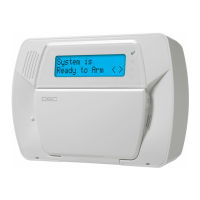20
25. Guidelines for Locating Smoke & CO Detectors
The following information is for general guidance only and it is recommended that local fire codes
and regulations be consulted when locating and installing smoke alarms and CO Alarms:
Smoke Detectors
Research has shown that all hostile fires in homes generate smoke to a greater or lesser extent.
Experiments with typical fires in homes indicate that detectable quantities of smoke precede detect-
able levels of heat in most cases. For these reasons, smoke alarms should be installed outside of each
sleeping area and on each storey of the home.
The following information is for general guidance only and it is recommended that local fire codes
and regulations be consulted when locating and installing smoke alarms.
It is recommended that additional smoke alarms beyond those required for minimum protection be
installed. Additional areas that should be protected include: the basement; bedrooms, especially
where smokers sleep; dining rooms; furnace and utility rooms; and any hallways not protected by the
required units.
On smooth ceilings, detectors may be spaced 9.1m (30 feet) apart as a guide. Other spacing may be
required depending on ceiling height, air movement, the presence of joists, uninsulated ceilings, etc.
Consult National Fire Alarm Code NFPA 72, CAN/ULC-S553-02 or other appropriate national stan-
dards for installation recommendations.
• Do not locate smoke detectors at the top of peaked or gabled ceilings; the dead air space in these
locations may prevent the unit from detecting smoke.
• Avoid areas with turbulent air flow, such as near doors, fans or windows. Rapid air movement
around the detector may prevent smoke from entering the unit.
• Do not locate detectors in areas of high humidity.
• Do not locate detectors in areas where the temperature rises above 38
o
C
(100
o
F) or falls below 5
o
C
(41
o
F).
Program User Codes
Change Attributes
Press [<][>]buttons to scroll to user code. Enter
[Master Code][9][xx] to enter the user code (xx = 1-16).
[1] Supervisor’s Code
[2] Duress Code
[3] Zone Bypassing
[4] Remote Access
[5]-[6] Future Use
[7] Bell/Siren Squawk Output
[8] One Time Use Code
User Commands
User Options
Event Buffer
System Test
Time and Date
System Service/DLS
User Call-up
Walk Test
Brightness Control
Buzzer Level Control
SMS Phone Numbers
Contrast Control
Late to Open
PGM Commands If programmed by the installer, can be used to activate events such
as opening/closing garage doors.
Installer Programming Requires a special code.
No-Entry Arming The system will arm in Stay mode after the exit delay expires, the
entry delay is disabled.
Quick Arm/Quick Exit Quick Arm is equivalent to entering your user code.
Quick Exit allows you to exit the premises without disarming the sys-
tem.
Keypad Keys, Indicators, and Commands (Continued)

